When it comes to recreational cycling, many bikes seemingly fit into the same mould. However, some subtle differences between each help to define which may be best for you. Recreational bikes are designed for road, fitness, commuting and general use, requiring them to be versatile, durable and comfortable. The most common type of recreational bikes are flat bar road, hybrid and urban bikes, and while they may look the same, all of them have different features that affect their performance, ride characteristics and purpose.
To help highlight the differences in each bike, we have selected some specific examples, all ranging between AUD$900 - AUD$1,000. For the flat bar road bike, we picked the Merida Speeder 100; a Merida Crossway 100 is our example of a hybrid bike; and the Norco Indie as the chosen example of an urban bike. Read on to get a better understanding of each style of bike, how to tell them apart, and how to choose the right bike for you.
Flat bar
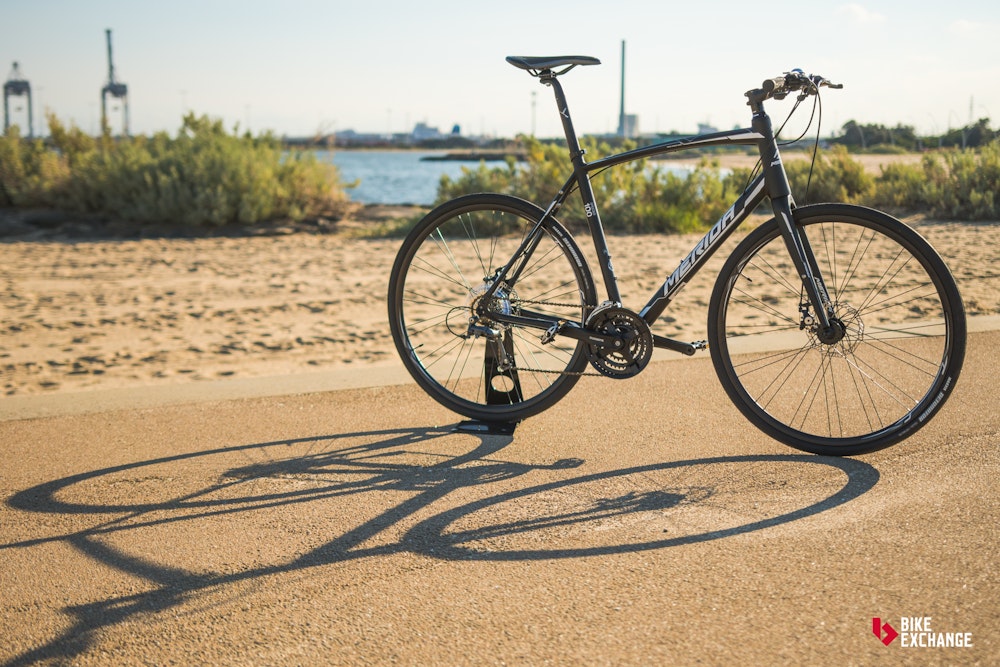
The best and simplest way to understand a flat bar road bike is to think of a traditional road bike with flat handlebars in place of the drop down handlebars. As a result, flat bar road bikes are sportier than urban and hybrid bikes, featuring quicker handling, a lighter weight, and gearing optimised for speed. The lack of drop down handlebars means flat bar bikes are not as aggressive as road bikes, but they do share the same technology and performance elements.
Flat bar road bikes provide great comfort and enhanced visibility with a more upright position, making them a perfect vehicle for recreational riding, fitness, and fast commuting. Below are the three key elements of a flat bar road bike that set it apart from urban and hybrid bikes.
Sporty
Flat bar road bikes are certainly the sportier option of the three bikes listed here, sharing similar characteristics to an endurance road bike, with the aim of combining performance and comfort.
A large portion of that is down to the bike's dimensions, or its geometry, (which we'll discuss in more depth below), but also the use of a lightweight frame. We weighed each bike and, not surprisingly, the flat bar road bike was the lightest by a significant margin. The Speeder (flat bar) weighs 11.12kg, the Indie (Urban) at 12.87kg, and the Crossway (Hybrid) 13.62kg.
The tyres selected also allow for greater speed and efficiency when riding, while offering fair puncture protection from obstacles like tram tracks and curbs. Flat bar road bike tyres are traditionally 28-32c wide, slightly wider than a traditional road bike tyre, but narrower than an urban or hybrid tyre. In this case, the Speeder has 32c tyres, the Indie 38c and the Crossway 40c.
There is also no suspension on flat bar road bikes, because they are strictly tarmac bikes and the suspension would only add unnecessary weight and loss of energy transfer.
Road Bike Geometry
There are some key geometry differences between each bike, which provide clear indications of each bike's purpose. Given the sporty nature and quicker handling of the flat bar road bike, it's no surprise to see the wheelbase is narrower, the chainstays shorter, and the headtube angle steeper. Performance road bikes typically have a steep headtube angle that requires less effort to steer, which is better for high-speed handling. A slacker head tube angle, like we see on the hybrid and urban bikes, performs better at slower speeds and provides greater stability. Similarly, a bike with a wider wheelbase and longer chainstay length delivers stability and comfort, whereas bikes with a 'short' wheelbase and chainstay length have sharper handling. Follow this link to learn more about [bike geometry and how to read such charts[(/blog/bike-geometry-charts).
The table below highlights the differences in each measurement, indicating the urban and hybrid bikes offer greater stability and slower handling when compared to the relatively agile flat bar road bike.
| Bike | Size | Chainstay | Wheelbase | Headtube angle |
|---|---|---|---|---|
| Speeder (Flat bar) | Large | 435 | 1017 | 73 |
| Crossway (Hybrid) | Large | 450 | 1091 | 72 |
| Indie (Urban) | Large | 450 | 1103 | 71.5 |
Gearing optimised for flat roads
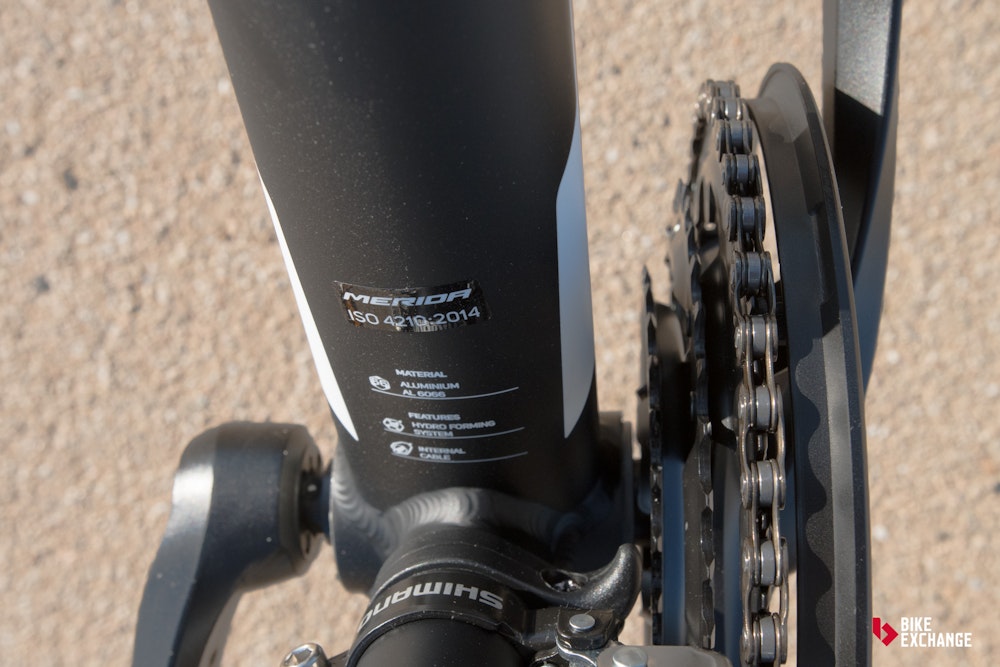
We've discussed the lightweight frame and tyres of the flat bar road bike, which lend themselves to faster speeds, but the gearing is another feature that has been optimised for flat, fast roads. All three bikes have easy gear ratios (more suitable for generally lower average speeds compared to other cycling forms), but flat bar bikes will have narrower gear ranges, which refer to the span from the very hardest (high) to the easiest (low) gear.
Our sample Speeder has a 24-speed drivetrain, which means three cogs to choose from at the front and eight cogs to choose from on the back. The three cogs on the front have 48, 38 and 28 teeth respectively, paired with the rear cogs that measure 11 teeth at the smallest and up to 28 teeth at the largest.
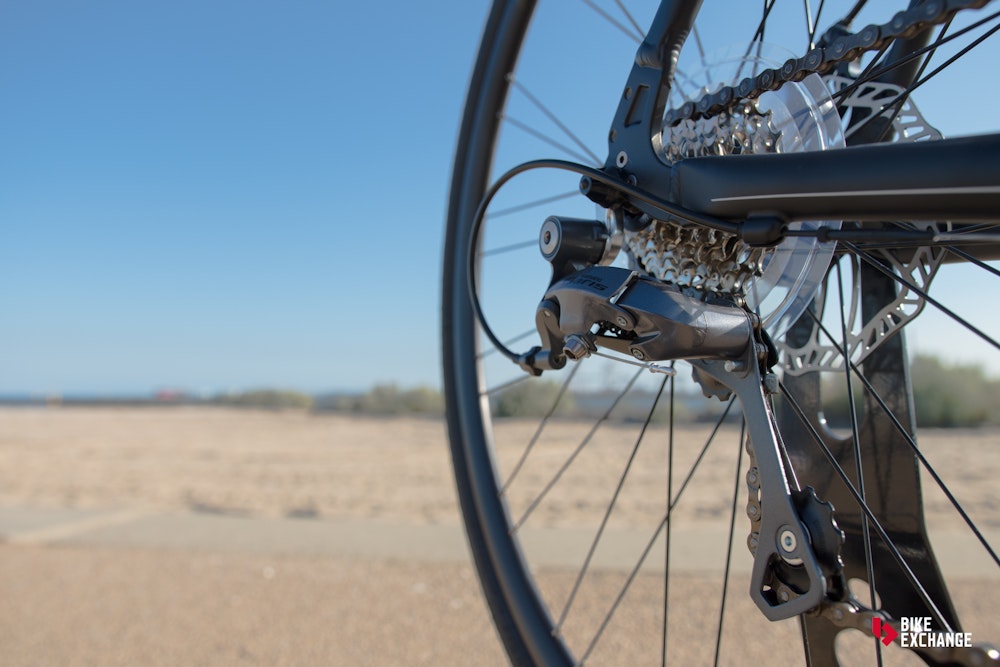
Despite also being equipped with a triple crankset, in order to provide a larger range of gears, the Crossway (hybrid) features 48, 36 and 26 teeth respectively on the front, and is paired with a larger cassette on the rear with cogs that measure 11 teeth at the smallest, up to 34 teeth at the largest. The larger gear range is better for slower speeds, hilly terrain, and non-sealed roads.
The specificity of the Indie (urban) gearing takes things one step further, offering a limited range as it's assumed most riding will be done on relatively flat roads at slower speeds (more on that below when we discuss urban bike gearing).
It's also common to see higher-end flat bar road bikes with the same gearing as endurance road bikes, such as a traditional 'compact' crankset, which features two cogs on the front with 50 and 34 teeth respectively, paired with rear cogs that measure 11 teeth at the smallest and 28 or 32 teeth at the largest.
Urban
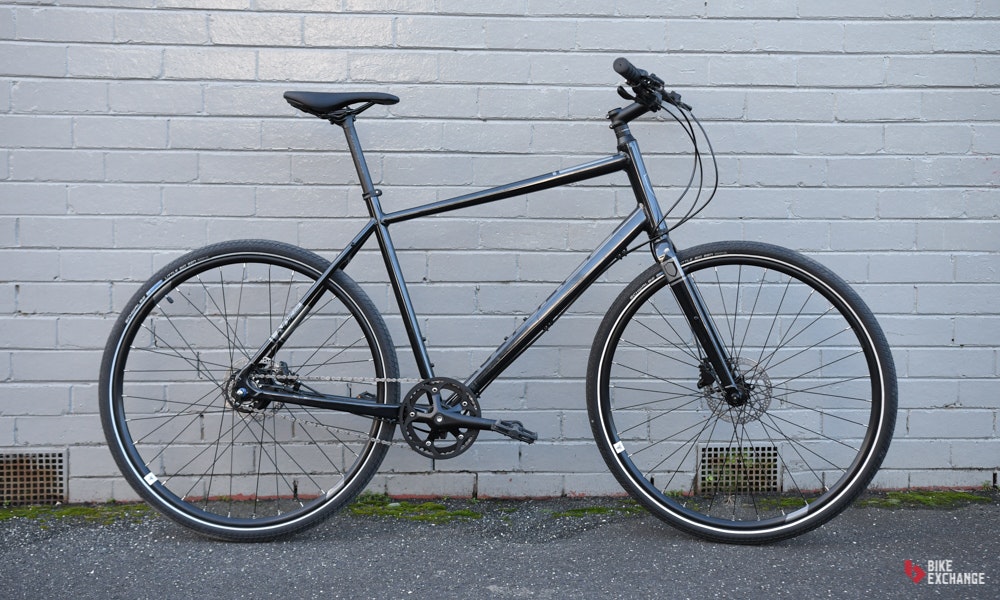
Urban bikes are designed specifically for inner-city riding, perfect for shorter-distance commuting and often featuring racks to carry luggage and wet-weather fenders to cope with all weather conditions. Like flat bar road bikes, they too will typically have flat style handlebars but an even more upright riding position and a smaller gear range, in some cases only a single gear. They are built strong to handle the rigors of the urban environment and are not as concerned with weight. Below are the three key elements of an urban bike that set it apart from flat bar and hybrid bikes.
Commuting
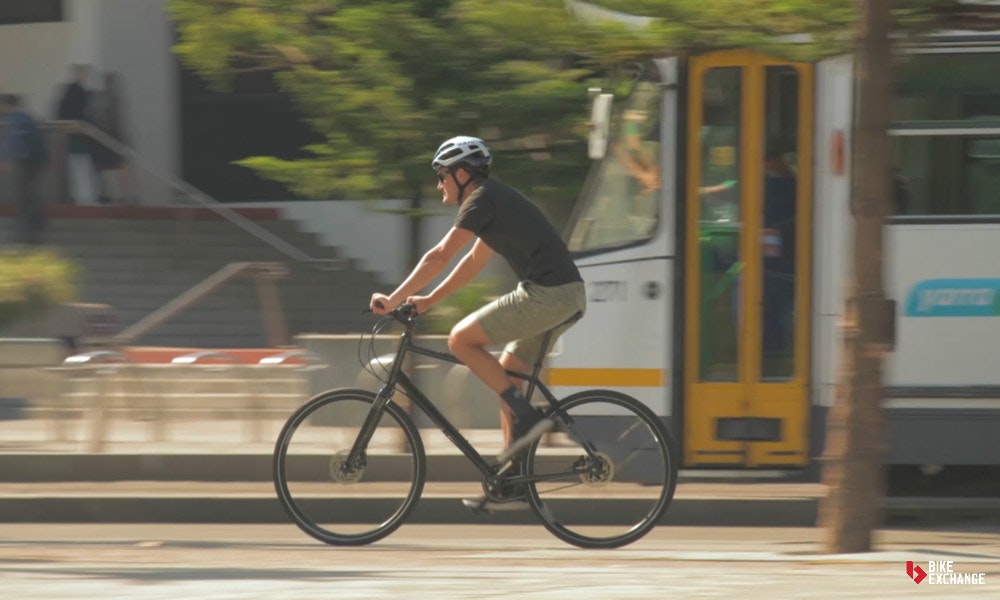
As urban bikes are solely focused on commuting and inner-city cycling, the need for expansive gear ratios and the ability to handle high speeds is not required. Urban bikes are purely functional, keeping extraneous features and attention-seeking aesthetics to a minimum.
The positioning is far more upright than other bikes, letting the rider see better through traffic, and it's common to see racks to carry luggage and wet-weather fenders or mudguards, so it can be ridden in all weather conditions. The focus on simplicity and durability continues to the gearing, which is commonly found internally located in the rear hub. Tyres are large and robust to navigate potholes, railway tracks, and construction zones, with the Indie having almost the same tyre size as the Crossway (hybrid), which is capable of off-road riding.
While the Indie we are profiling here has disc brakes, often urban bikes are controlled via the pedals, or with a single brake. Previously disc brakes were limited to mountain bikes and higher-end recreational bikes but the advent of disc brakes over rim or pedal controlled brakes onto all of these bikes is due to them providing superior brake control and durability, especially in the wet, making them the preferred option.
Robust
Not a lot of TLC is required with urban bikes. They are built strong and robust, and are typically heavier than flat bar road bikes as a consequence. When you consider the Indie weighs over 1.5kg more than the Speeder (flat bar) despite having similar features and significantly fewer gears, it's clear to see they are a functional bike with a focus on durability.
Gearing optimsed for the city
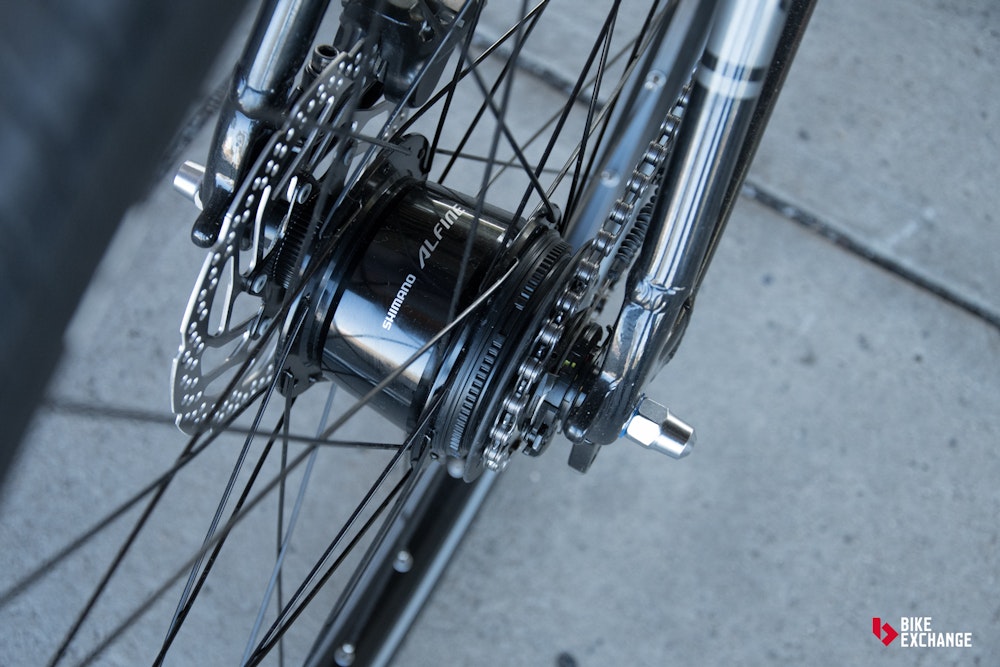
Urban bikes were created to conquer metro areas that typically are ridden at slower speeds, across sealed road surfaces and mostly flat terrain, and the gearing of the urban bike reflects this. The Indie we are using as an example has an 8-speed drivetrain with the gears located internally within the rear hub. Hiding the mechanics means they are not exposed to the elements and less likely to deteriorate prematurely. Conversely, the Speeder (flat bar) and Crossway (hybrid) have 24 and 27 gears respectively, highlighting they are more suited to the hillier terrain and a variety of areas.
It's also common to see urban bikes with only a single speed for the same reasons we only see eight gears on the Indie, they are for slow, flat, city streets without a large variance in speed expected.
Hybrid
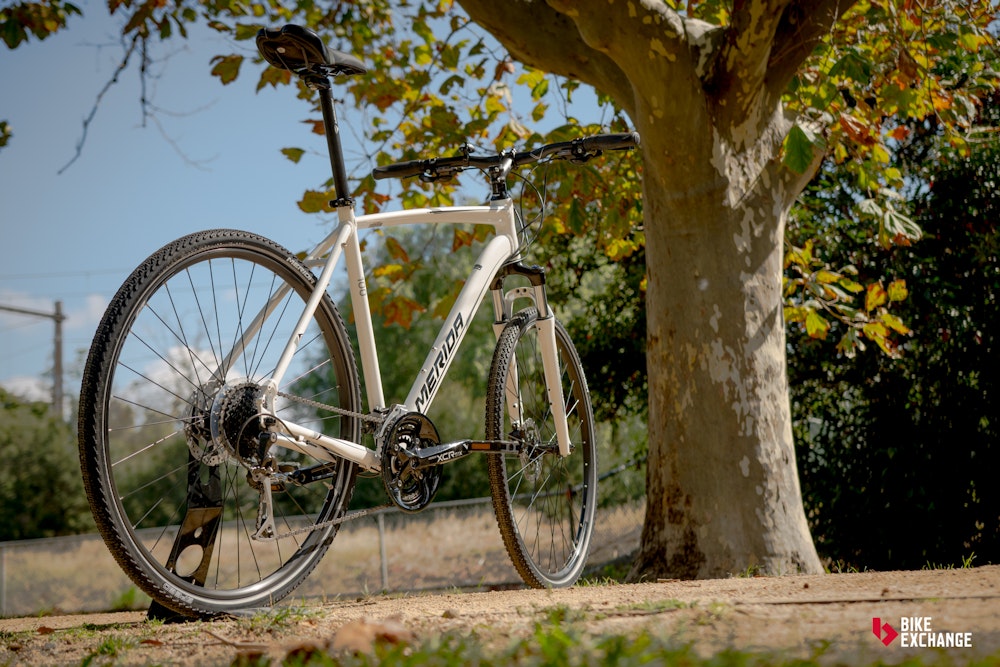
A hybrid bike combines a number of popular features from other styles of bike to create something both comfortable and efficient to ride that is also capable of riding light off-road. A hybrid bike is suitable for many types of terrain, requiring it to have wider tyres, a wider range of gearing, an even more upright riding position, and often front suspension. It aims to be a do-it-all bike that is suitable for recreational riding, fitness, commuting, and riding on light, non-sealed roads. Below are the three key elements of a hybrid bike that set it apart from flat bar and urban bikes.
All-purpose
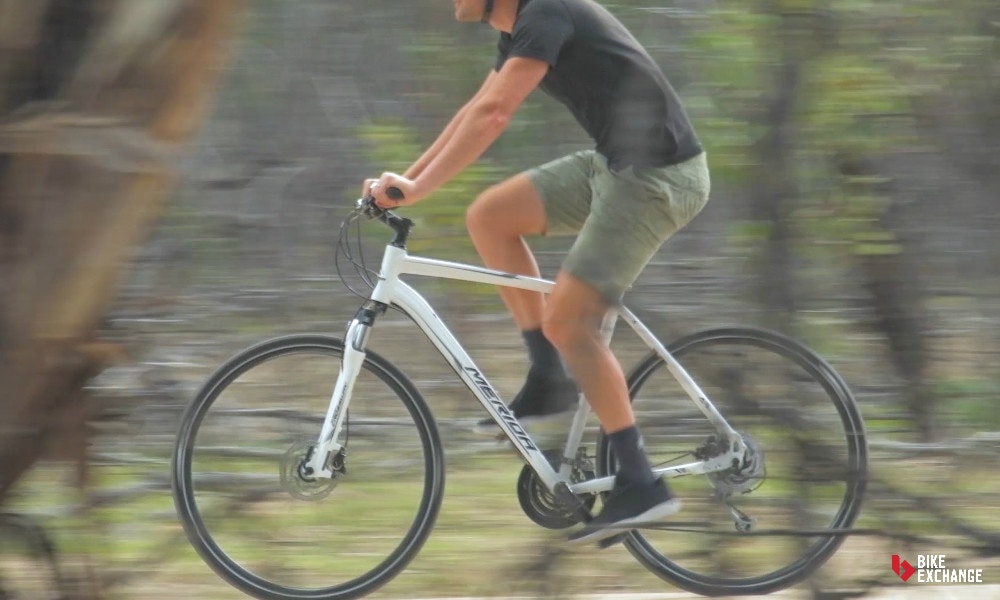
Hybrid bikes take elements of other bikes to create an all-purpose option suitable for sealed and non-sealed roads. The Crossway we have here has the largest tyre size of the three, the largest gear range, and is the only bike with suspension. The tyres also feature a far more pronounced tread pattern than the other three.
Due to its versatility, a hybrid bike can perform well across a variety of platforms, but not exceptionally well, similar to being a jack of all trades, but master of none. For example, yes, there is suspension and a tread pattern with wide tyres, but it would only be suitable for light non-sealed roads, unlike a true mountain bike that features greater travel (movement) in its suspension, wider tyres and a more pronounced tread pattern. Similar to riding on the road, the versatility of having suspension, wider tyres and a light tread pattern will slow this bike down on smooth tarmac compared to a road bike or flat bar bike. And when commuting, there is a superfluous amount of gears and you're not guaranteed to have racks or mudguards like a commuter.
Suspension
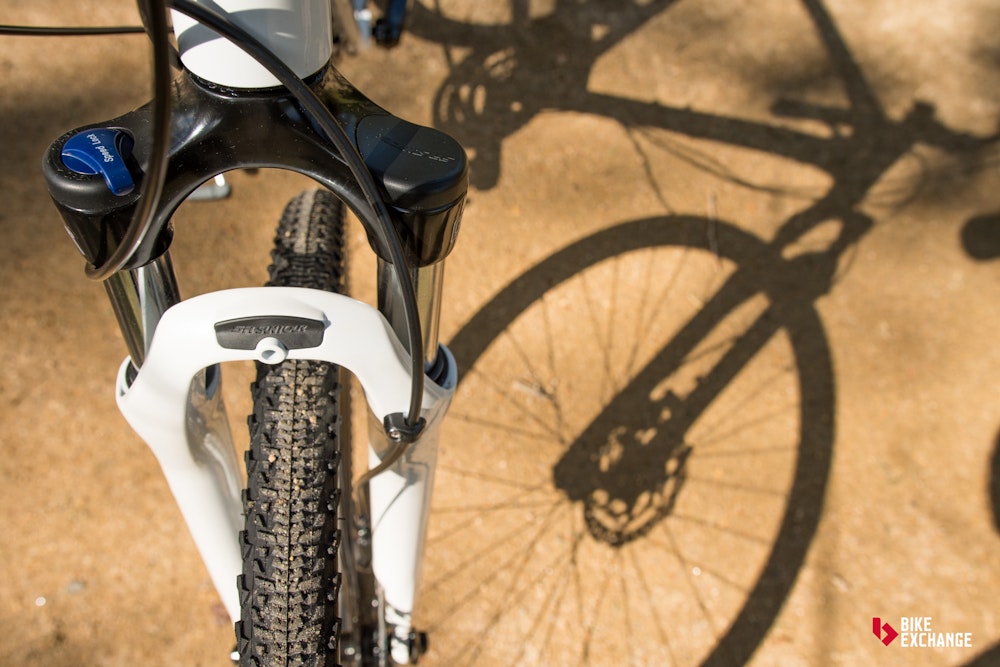
The addition of front suspension on hybrid bikes makes them far more versatile than the flat bar and urban bikes. The small amount of cushion it provides makes it suitable for off-road riding on light non-sealed roads. But before you head to your local trails for a shredding session, it's important to know the travel (movement in the suspension) on hybrid bikes is typically far less than a mountain bike. The Crossway we have has approximately 60mm of travel, whereas a mountain bike of the same value will have typically have 100mm of travel or more, making it more suited to rougher trails.
Varied frame design
Because hybrid bikes are a composite of other bikes, their frame design is often unique and different to that of flat bar and urban bikes. The Crossway used as an example here resembles a mountain bike with its front suspension and sloping top tube, but change the front fork and it could just as easily look like a road bike. Some hybrid bikes feature incredibly low step-over heights, others with almost horizontal top tubes, and some with extravagant bends in their frame. In short, unlike road or mountain bikes that can be easily categorised as such, hybrid bikes don't have a specific look; rather, they are designed in a multitude of different ways, as long as the primary object of creating a comfortable and efficient to ride with great versatility is met.
Hybrid bikes are often easily confused with Fitness or Comfort bicycles, with the latter two styles typically offering a low slung frame design, with an even more upright ride position. While they share many of the same features, hybrid bikes, like our sample, remain a more versatile option capable of light off-road use and faster cycling, while fitness and comfort bicycles are built with leisurely rides on sealed surfaces in mind – they’re typically pitched at those with existing neck or back injuries, or more elderly riders.
We hope this guide has been helpful and provided some valuable information. You can browse BikeExchange for hybrid bikes, urban bikes, flat bar road bikes, or search for your local bike shop to get further assistance.
**Follow BikeExchange: [Email](http://www.bikeexchange.co.nz/subscribe) | [Facebook](https://www.facebook.com/BikeExchange.com.au) | [Twitter](https://twitter.com/bikeExchange) | [Instagram](https://www.instagram.com/bikeexchange/) | [YouTube](https://www.youtube.com/user/BikeExchangeTV) | [STRAVA](https://www.strava.com/clubs/BikeExchange)**




